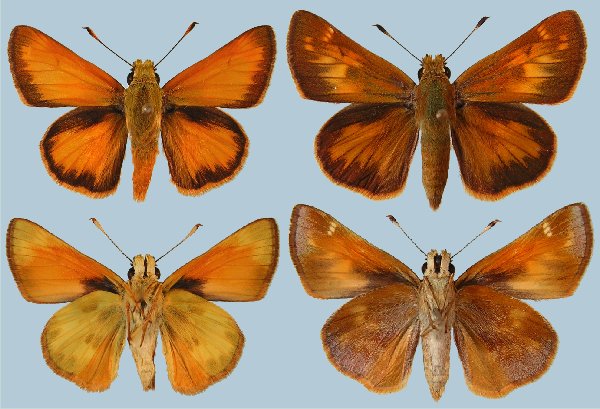Poanes taxiles

Photo Life History: Poanes taxiles
Habitat: Mountain Canyons
Host Plants: Bromus inermus; Phalaris arundinacea
Suitable Lab Host Plants: Sorghum halepense (Most wide-bladed weedy grasses work fine to feed this larva in the lab.)
Caring for Live Female Butterflies: Nectaring techniques
Methods of Female Oviposition: Portable Cages; Open Screen Cages. (Getting eggs out of females has proven to be the most effective way of rearing this skipper.)
How to Find Eggs: Look on grass blades. Finding eggs can be difficult if host grasses are too common.
How to Hatch Eggs: Consolidate eggs into one container
How to Find Caterpillars in the Field: Skipper Nests (Scroll down to find skipper nests for the taxiles skipper.)
Caterpillar setups: Open terrariums; Open Bucket. Click here to watch a video demonstrating how to place a hatchling first instar Poanes caterpillar on wide bladed grasses.
Overwintering Stage: Fourth instar out of six instars.
Overwintering Strategies:
Larva to Pupa:
Emergence: Emergence Container
Number of Broods per Year: 1 to 3; depending upon location.
Avoiding Diapause Techniques: Provide larvae healthy host plant and possibly expose larvae to 24 hours of light. Some larvae like to diapause at fourth instar; however, if you keep providing healthy host to the larva in the lab, they bypass diapause and continue through six instars to pupate and emerge same year.
Disease Prevention:
Field Notes: Finding late instar larval nests has been somewhat challenging in Northern Utah; but was somewhat easier in Garden Canyon, Cochise County, Arizona. I have had the best luck getting eggs out of females using portable cages.

